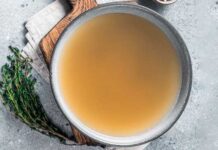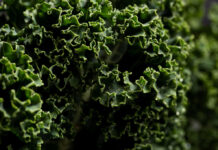
Some people use acupressure to provide sinus pain relief. A person can visit a licensed therapist or try it at home by applying gentle pressure to specific points on the face and other areas.
Acupressure is one way to help relieve sinus pressure and other symptoms. This traditional treatment is similar to acupuncture and even uses the same points.
But instead of needles, pressure is placed at specific points on your face and body using your hands and fingers.
This article covers the application of acupressure for sinus relief and how to perform it at home.
Acupressure And Acupuncture For Sinus Pain Relief
Some people believe acupressure and acupuncture can help treat acute and chronic pains.
Limited research suggests that in addition to treating chronic pain, acupressure may also help manage other conditions such as anxiety, hypertension, and insomnia. However, studies are often of low quality or small sample sizes.
While some people use acupressure to treat sinus pain and other conditions, support for the practice remains largely anecdotal. However, acupressure as a practice is of low risk, so it may be worth trying even though evidence of efficacy is minimal.
How To Do Acupressure For Your Sinuses
Using the following steps, people can try acupressure for sinus pain relief at home.
- Use a mirror to help you find the points on your face.
- Apply firm but gentle pressure on the points for at least 3 minutes each. You can use your fingers, thumbs, or a thin, blunt object, like the eraser tip of a pencil.
- Repeat throughout the day for several days.
People can press on the acupressure points or gently rub or rotate their fingers in a circular motion over the area.
9 Pressure Points for Sinus Relief
Here are the main acupressure points for sinus relief and how to find them:
LI20

The large intestine 20 (LI20) acupressure points are found on the face, on both sides of the base of your nose. To relieve sinus pressure:
- Find the area where your nose joins your cheeks.
- Press one finger on your face at either side of your nostrils.
BL2

The bladder 2 (BL2) pressure points are located between the bridge of your nose and the inner side of your upper eyelid. To relieve pressure in your sinuses and around your eyes, try this:
- Using both hands, place your index fingers above the bridge of your nose.
- Slide your fingers into the tiny hollows between your eyebrows and nose.
- Rest your fingers here. You should be able to feel the firmness of your brow bone.
Yintang

The acupressure point GV24.5 is better known as Yintang. It’s often called the third eye point because it’s located between the eyebrows. This single acupressure point helps to relieve a stuffy or runny nose and sinus headache pain. To find it:
- Place one or two fingers between your eyebrows.
- Find the area just above the bridge of your nose, where your forehead connects to the nose.
- Apply pressure or rub the area for a few minutes.
SI18

The small intestine 18 (SI18) points are on both sides of your nose, just below the cheekbones. These points are used to help soothe swollen sinuses and a runny nose. To locate them:
- Place your index finger from both hands at the outer edge of each eye.
- Slide your fingers down until you can feel the bottom of your cheekbones.
- This area should be about level with the lower edge of your nose.
- Press on these points at the same time or one at a time.
GB20

The gallbladder 20 (GB20) points are on the back of your head. They’re located in the grooves at the back of your head, where your neck muscles attach to your head.
These acupressure points are used for sinus pressure symptoms, like headache and watery eyes, and cold and flu symptoms. Here’s how to find them:
- Clasp your hands together behind your head.
- Slide your thumbs up and down to find the grooves behind your ears at the base of your skull.
- Apply pressure here using both of your thumbs.
LI4

The He Gu or large intestine 4 (LI4) points are on the back of your hands. They’re connected to the large intestine and may help to soothe headaches and facial pain from sinus problems. Apply pressure to the LI4 points on your hands, one at a time.
The points are about a half inch from the crease between your thumb and hand. Here’s how to find them:
- Hold your hand up so that the thumb side is facing you.
- Find the area where your thumb connects to your hand.
- Keep your thumb close to your hand. Look for where the muscle between your thumb and index finger bulges out. One way to find it is to bring your thumb up against your index finger, which will cause a mound to form on the back of your hand. Place the opposite thumb or another finger on this mound.
- Relax your hand again, and apply pressure to this area using the finger of your opposite hand.
LU5

The lung meridian 5 (LU5) points are located inside each elbow. These points help to relieve sinus congestion and pressure, which may help relieve pain and a runny nose. The LU5 points are also linked to your lungs and breathing. To find them:
- Hold your arm stretched out in front of you so that your palm is facing up.
- Find the crease on the thumb side of your inner elbow.
- This is where your forearm muscle dips slightly as it connects to your elbow.
- Press on the area.
- Repeat and switch arms.
LU9

The lung meridian 9 (LU9) points can be found inside each wrist. They’re used to relieve throat symptoms from a sinus infection. Here’s how to find them:
- Hold your hand up in front of you so that your palm is facing you.
- Find the crease where your hand connects to the wrist.
- Place your finger on the crease just below your thumb.
- Repeat and switch hands.
Liv3

The liver 3 (Liv3) or Tai Chong pressure points are on your feet, just back from your big toes. People believe these points have links to the liver and can help to relieve headaches and pain around your eyes. To find them:
- Sit down with your knees bent and your feet in front of you.
- Place your finger in the area between your big toe and the next toe.
- Slide your finger up your foot about two finger widths. This is where the pressure point is located.
- Press at this spot. Apply pressure on both feet simultaneously or one at a time.
Using acupressure can sometimes help ease pain and other symptoms right away. You may feel the pressure lifting slightly as you apply pressure on the specific points.
You may need to continue the acupressure treatment for several days before you feel anything. Pressure shouldn’t be painful or bruise the area.
If you’re pregnant or trying to get pregnant, talk with your doctor before trying acupressure points. Limited research suggests that acupressure can cause cervical changes pre-labor.
Where Are The Sinuses?
The sinuses are hollow spaces or cavities in the bones around the nose. Your sinuses make mucus or fluid. The mucus drains into your nasal cavity (nose) and the back of your throat. This keeps your nose moist and removes dust, allergens, and germs.
There are four pairs of sinuses connected to your nose:
- Maxillary sinuses, behind the cheekbones on each side of your nose
- Frontal sinuses, above your eyes near the forehead
- Ethmoidal sinuses, air cells between the eyes and the bridge of your nose
- Sphenoid sinuses, near the optic nerve behind the eyes, close to the center of the head
The Takeaway
Acupressure may help your sinus symptoms. It can’t cure a serious infection. You might still need antibiotic treatment if you have a bacterial sinus infection. A virus like the flu or a cold can also cause a sinus infection.
If allergies cause your sinus symptoms, it may help to avoid allergen triggers like pollen and dust. Ask your doctor about the best over-the-counter medications for allergy relief.
You may need to apply pressure on the points several times a day for several days before you find relief from sinus symptoms.
Sources:
- Chen, S-R, et al. (2022). Effects of acupressure on anxiety: A systematic review and meta-analysis [abstract].
pubmed.ncbi.nlm.nih.gov/35085025 - He, Y, et al. (2020). Clinical evidence for association of acupuncture and acupressure with improved cancer pain.
ncbi.nlm.nih.gov/pmc/articles/PMC6990758 - Mehta, P, et al. (2017). Contemporary acupressure therapy: Adroit cure for painless recovery of therapeutic ailments.
ncbi.nlm.nih.gov/pmc/articles/PMC5388088 - Smith, CA, et al. (2017). Acupuncture or acupressure for induction of labour.
ncbi.nlm.nih.gov/pmc/articles/PMC6953318 - Zhao, Z-H, et al. (2020). Auricular acupressure in patients with hypertension and insomnia: A systematic review and meta-analysis.
ncbi.nlm.nih.gov/pmc/articles/PMC7317612
Important Notice: This article was originally published at www.healthline.com by Noreen Iftikhar, MD where all credits are due. Medically reviewed by Nicole Leigh Aaronson, MD, MBA, CPE, FACS, FAAP
Disclaimer
The watching, interacting, and participation of any kind with anything on this page does not constitute or initiate a doctor-patient relationship with Dr. Farrah™. None of the statements here have been evaluated by the Food and Drug Administration (FDA). The products of Dr. Farrah™ are not intended to diagnose, treat, cure, or prevent any disease. The information being provided should only be considered for education and entertainment purposes only. If you feel that anything you see or hear may be of value to you on this page or on any other medium of any kind associated with, showing, or quoting anything relating to Dr. Farrah™ in any way at any time, you are encouraged to and agree to consult with a licensed healthcare professional in your area to discuss it. If you feel that you’re having a healthcare emergency, seek medical attention immediately. The views expressed here are simply either the views and opinions of Dr. Farrah™ or others appearing and are protected under the first amendment.
Dr. Farrah™ is a highly experienced Licensed Medical Doctor certified in evidence-based clinical nutrition, not some enthusiast, formulator, or medium promoting the wild and unrestrained use of nutrition products for health issues without clinical experience and scientific evidence of therapeutic benefit. Dr. Farrah™ has personally and keenly studied everything she recommends, and more importantly, she’s closely observed the reactions and results in a clinical setting countless times over the course of her career involving the treatment of over 150,000 patients.
Dr. Farrah™ promotes evidence-based natural approaches to health, which means integrating her individual scientific and clinical expertise with the best available external clinical evidence from systematic research. By individual clinical expertise, I refer to the proficiency and judgment that individual clinicians acquire through clinical experience and clinical practice.
Dr. Farrah™ does not make any representation or warranties with respect to the accuracy, applicability, fitness, or completeness of any multimedia content provided. Dr. Farrah™ does not warrant the performance, effectiveness, or applicability of any sites listed, linked, or referenced to, in, or by any multimedia content.
To be clear, the multimedia content is not intended to be a substitute for professional medical advice, diagnosis, or treatment. Always seek the advice of your physician or other qualified health providers with any questions you may have regarding a medical condition. Never disregard professional medical advice or delay in seeking it because of something you have read or seen in any website, video, image, or media of any kind. Dr. Farrah™ hereby disclaims any and all liability to any party for any direct, indirect, implied, punitive, special, incidental, or other consequential damages arising directly or indirectly from any use of the content, which is provided as is, and without warranties.








